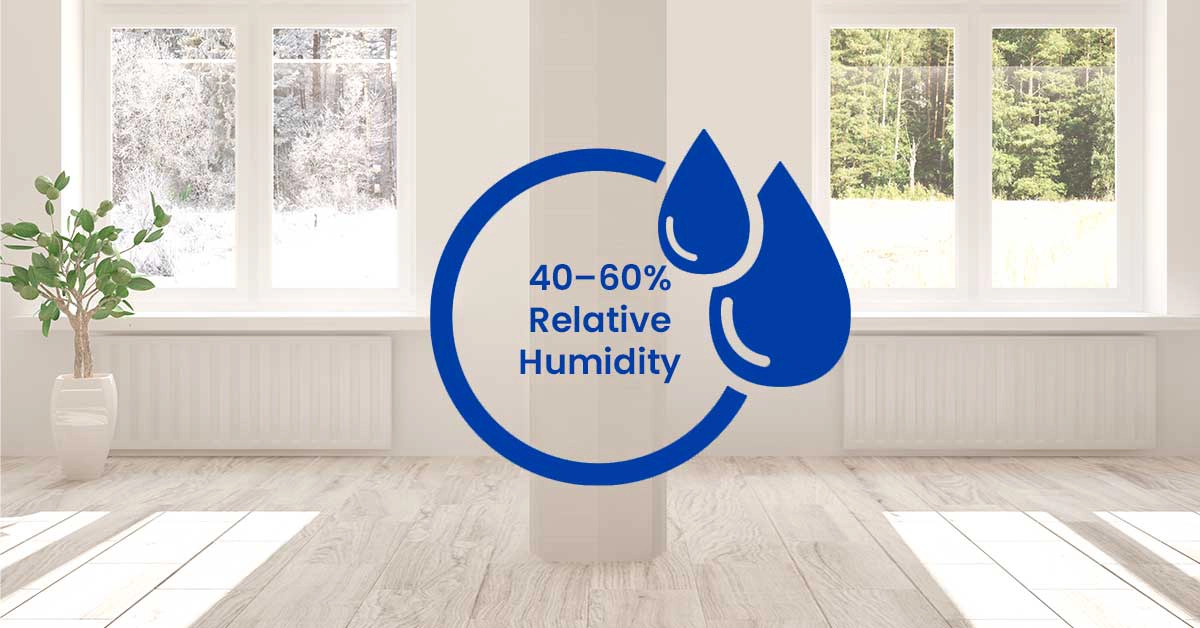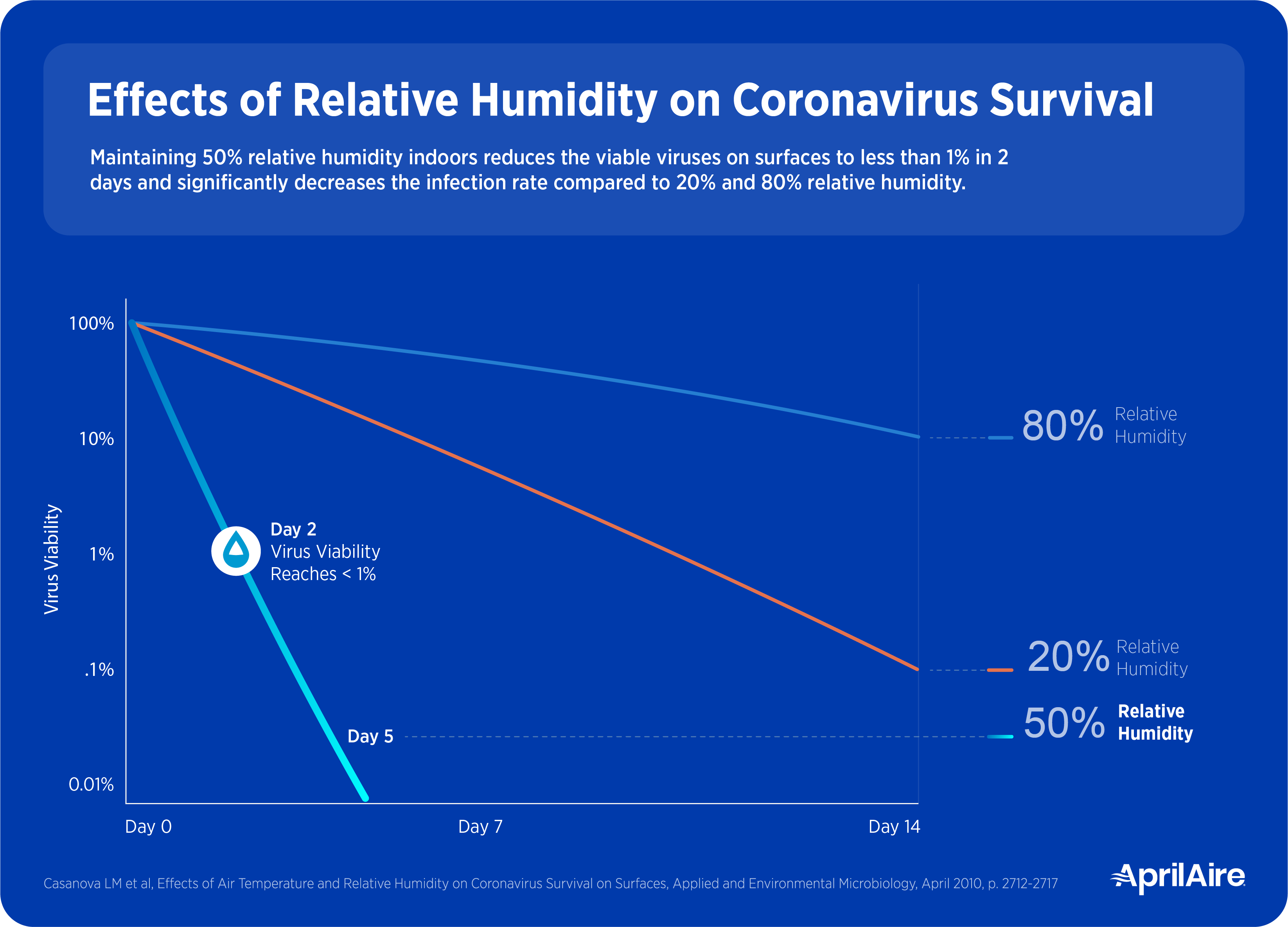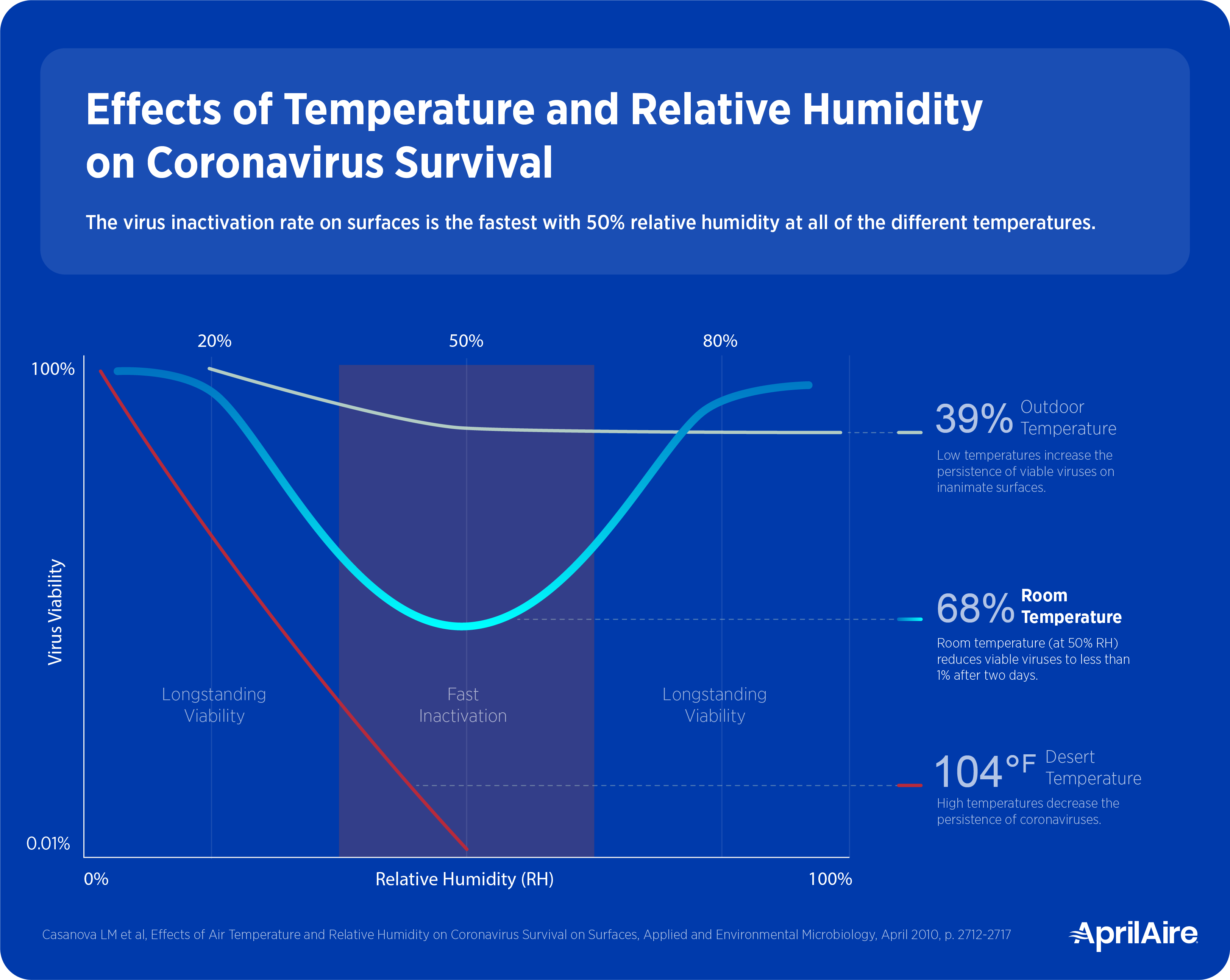Clear the Air, Clear Viruses! How Indoor Humidity Helps Protect Against Cold and Flu Viruses
3 minute read
We all want to clear viruses from our air in the wintertime! While you may be familiar with the results of high humidity in the summertime or the dryness that comes from low humidity in the winter, is it possible that perfecting the humidity levels in your home can help clear viruses and protect your air from lingering cold and flu viruses that are waiting to strike?
The experts at ASHRAE, the CDC, and even the EPA agree: Balancing your home’s humidity level year-round can help reduce a wide range of negative health and home impacts caused by too-low or too-high humidity. When your home’s levels anchor between 40–60%*, you can limit health concerns, like allergy and asthma symptoms, respiratory infections, and even help clear viruses by ensuring your home continues to maintain an optimal humidity level.
To further showcase the benefits, take a look at this indoor humidity chart to see how humidity control works to clear viruses, like COVID-19 and flu viruses.
Clear Viruses and Reduce Moisture During Summer
We know what you’re thinking. While we typically tend to explore solutions that can improve our overall wellness during the low humidity points of the wintertime, it’s still possible to be impacted by flu viruses, bacteria, and more in the summertime when humidity is high.
Regardless of the season or where you live, homes with balanced humidity are proven to clear viruses and improve respiratory immune system’s defenses, making them more effective at capturing, removing, or fighting germs. In the summer, adding an AprilAire Whole-House Dehumidifier can help save you from the muggy, sticky feeling you may experience in your home while also offering standout health- and home-related benefits.
This indoor humidity chart explains: No matter the temperature of your space, a room with 50% humidity not only provides improved comfort but is proven to clear viruses faster—with less than 1% of viruses viable after two days. This is why balanced humidity, between 40–60%*, is recommended year-round.
Clear Viruses and Safeguard Health During Dry Winters
In the winter, an AprilAire Whole-House Humidifier can protect you from the risks of dry air and reduce your chances of contracting winter illnesses, like flu viruses. Not only can a humidifier help clear viruses, they also offer a wealth of other valuable benefits you can enjoy.
The below indoor humidity chart shows how using a humidifier in the wintertime can help clear viruses just like dehumidifiers can in the summertime: Coronaviruses on surfaces stay viable for a week in heated, dry indoor air with humidity that falls below (~20%) or above (~80%) the recommended 40–60%* range. By humidifying the air to 50%, you can clear viruses and reduce viability to less than 1% in two days
Clear Viruses With Humidity Control
We’re all searching for ways to stay safe and healthy at home, but, depending on where you live, your humidity control needs may be different than a region that experiences all four seasons, one with harsher winters, or one with hot, low-humidity summers.
No matter where you live or what your home’s needs are, the right AprilAire Healthy Air solutions can help you achieve optimal humidity levels year-round, clear viruses, and protect your home. Contact your local AprilAire Healthy Air Professional to start improving your home and health.
*While balanced humidity exists between 40 and 60%, it’s important to remember that outdoor temperature and other home factors will impact what relative humidity level is attainable and recommended for your house. Talk with your AprilAire Healthy Air Professional to learn more.





